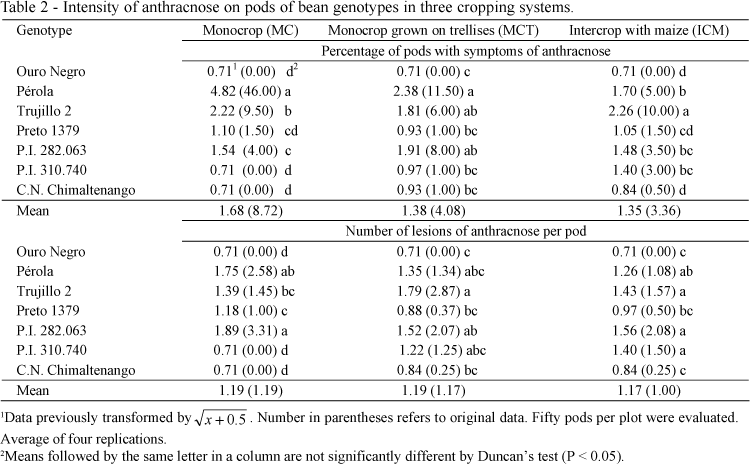With the purpose to evaluate the intensity of angular leaf spot (ALS) and anthracnose (ANT) on pods, nine genotypes of common bean were planted in three cropping systems: monocrop (MC), monocrop grown on trellises (MCT), and intercrop with maize (ICM). In MC, beans were planted 0.5 m apart. Trelisses were set up with 1.8 m high bamboos and beans were sown 0.65 m apart. In ICM, beans were planted simultaneously with maize and in its rows. This cereal was sown 1.0 m apart with four plants per meter. Each cropping system was an independent trial installed close to each other. Climbing genotypes of beans most susceptible to ALS had less diseased pods in ICM than in both MC and MCT, but the less susceptible genotypes, regardless of their growth type, as well as the susceptible bush and semiclimbing genotypes, were similarly attacked by ALS in the three systems. ANT on pods of the susceptible bean cv. Pérola was less intense in MCT than in MC, and less intense in ICM than in MCT. ANT seed transmission was 11 %, 9.1 %, and 4.4 % when seeds come from MC, MCT, and ICM, respectively.
Phaeoisariopsis griseola; Colletotrichum lindemuthianum; Phaseolus vulgaris; seed transmission


